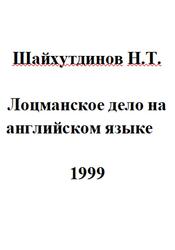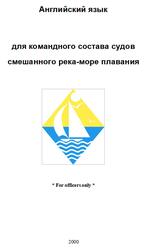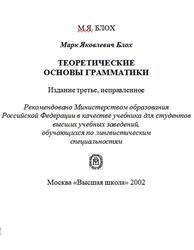While Bermuda is one of the oldest continuously inhabited British overseas territories with a rich 400-year history, it is also one of the blank spots considering the vast amount of linguistic research that focuses on locales around the globe where English varieties are spoken. Comparatively few (published) studies describe the structure and use of the local variety of English on any linguistic level, be it from a diachronic or synchronic perspective: Bermudian English (BerE) remains one of the most under-researched varieties of English to date (Cutler, Hackert & Seymour 2006:2066). Considering the historical time-depth of the locale as well as the position and role of Bermuda in relation to British overseas endeavors in the wider geographical region, taking a closer look at Bermuda and BerE is in many ways long overdue.
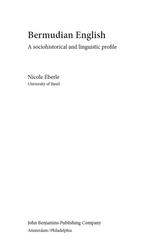
The beginnings of settlement and the early years.
The available land area is but one factor of Bermudas archipelagic nature that has influenced the colony’s development since discovery. Another is its dependence on the sea: “Bermuda ha[s] always been a maritime place, in the sense that the sea profoundly shaped island life” (Jarvis 2010a: 62).
While the exact date of discovery is not known, sources agree that the archipelago was discovered sometime between 1508 and 1511 (see for instance Zuill 1983: 3). Because no seafaring nation had any interest “in colonizing so small a place” (Bernhard 1999: 2), however, none claimed the territory immediately after discovery, even when maritime activities throughout the Atlantic increased. Bermuda had a predominantly negative reputation at that time, as storms and extensive coral reefs posed threats for passing ships and many vessels wrecked on its shores. This led sailors to fear the waters and to refer to Bermuda as Ya de demonios, the “Isle of devils” (Greene 1901: 222; see also Zuill 1983: 5).
Contents.
List of tables.
List of figures.
List of maps and pictures.
Acknowledgments.
Chapter 1 Introduction.
1.1 Bermudian English as a blank spot: Existing research.
1.2 Research design and aims.
Chapter 2 The theoretical framework of Bermudian English as a contact-based variety.
2.1 Contact dialectology and dialects in contact.
2.1.1 Accommodation, its linguistic outcomes, and koinéization.
2.1.2 New-dialect formation models.
2.2 Beyond dialects in contact.
2.2.1 Universals and typologies of English(-based) varieties.
2.2.2 How to classify Bermudian English?.
2.2.3 Space, spatiality, migration and mobility.
2.2.4 The sociolinguistics of mobility.
2.3 Synthesis.
Chapter 3 Bermuda: 400 years of history.
3.1 The Bermudian social history: From shore to shore.
3.1.1 The beginnings of settlement and the early years.
3.1.2 Navigating the waters during Bermuda’s maritime age.
3.1.3 A new orientation in 19th-century Bermuda.
3.1.4 20th-century Bermuda and the heyday of tourism.
3.1.5 A snapshot of contemporary life in Bermuda.
3.2 The Bermudian sociolinguistic situation.
3.2.1 The formation and historical development of Bermudian English.
3.2.2 The contemporary linguistic context of Bermudian English.
Chapter 4 Methodology and data.
4.1 Fieldwork methodology.
4.2 The corpus and potential caveats.
Chapter 5 Bermudian English morphosyntax: Qualitative and quantitative analyses.
5.1 A first descriptive profile of Bermudian English morphosyntax.
5.1.1 Noun phrase.
5.1.2 Adjective phrase.
5.1.3 Prepositional phrase.
5.1.4 Verb morphology and syntax.
5.1.5 First insights into Bermudian English morphosyntax.
5.2 Typological affiliations of Bermudian English: Cross-dialectal profiles.
5.2.1 Methodology.
5.2.2 Results and discussion of findings.
5.3 A variationist analysis of selected Bermudian English features.
5.3.1 Syllable-coda consonant cluster reduction.
5.3.1.1 Methodology.
5.3.1.2 Results and discussion of findings.
5.3.2 Past be leveling.
5.3.2.1 Methodology.
5.3.2.2 Results and discussion of findings.
Chapter 6 Conclusion.
6.1 The cross-dialectal profiles.
6.2 The feature analyses: Consonant cluster reduction and past be leveling.
6.3 Bermudian English: Not as blank a spot anymore.
References.
Appendices.
Appendix 1. Informants.
Appendix 2. Qualitative typological analysis.
Appendix 3. Quantitative CCR results.
Appendix 4. Quantitative past be leveling results.
Index.
Бесплатно скачать электронную книгу в удобном формате, смотреть и читать:
Скачать книгу Bermudian English, A sociohistorical and linguistic profile, Eberle N., 2021 - fileskachat.com, быстрое и бесплатное скачивание.
Скачать pdf
Ниже можно купить эту книгу, если она есть в продаже, и похожие книги по лучшей цене со скидкой с доставкой по всей России.Купить книги
Скачать - pdf - Яндекс.Диск.
Дата публикации:
Теги: учебник по английскому языку :: английский язык :: Eberle
Смотрите также учебники, книги и учебные материалы:
Следующие учебники и книги:
 Optimise, Student s book, Premium pack, B1, Mann M., Taylore-Knowles S. — Фрагмент из книги. Some verbs or phrases are usually followed by either the -ing form of the verb, the full … Книги по английскому языку
Optimise, Student s book, Premium pack, B1, Mann M., Taylore-Knowles S. — Фрагмент из книги. Some verbs or phrases are usually followed by either the -ing form of the verb, the full … Книги по английскому языку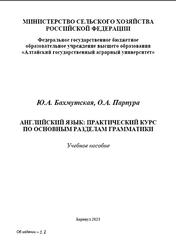 Английский язык, Практический курс по основным разделам грамматики, Бахмутская Ю.А., Парпура О.А., 2023 — Учебно-теоретическое издание состоит из восемнадцати грамматических разделов, содержит тренировочные упражнения и контрольные работы, контрольное задание, библиографический список. Основная его цель … Книги по английскому языку
Английский язык, Практический курс по основным разделам грамматики, Бахмутская Ю.А., Парпура О.А., 2023 — Учебно-теоретическое издание состоит из восемнадцати грамматических разделов, содержит тренировочные упражнения и контрольные работы, контрольное задание, библиографический список. Основная его цель … Книги по английскому языку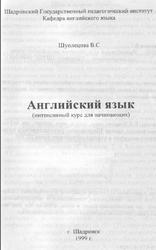 Интенсивный курс обучения английскому языку для начинающих, Шуплецова В.С., 1999 — Данное учебное пособие предназначено для студентов 1-го курса английского отделения факультета иностранных языков в период организации вводно-фонетического курса на начальном … Книги по английскому языку
Интенсивный курс обучения английскому языку для начинающих, Шуплецова В.С., 1999 — Данное учебное пособие предназначено для студентов 1-го курса английского отделения факультета иностранных языков в период организации вводно-фонетического курса на начальном … Книги по английскому языку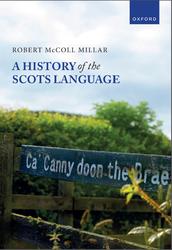 A History of the Scots Language, Millar R.M., 2023 — Writing the history of any language is a daunting task. The question is often not what should be placed in … Книги по английскому языку
A History of the Scots Language, Millar R.M., 2023 — Writing the history of any language is a daunting task. The question is often not what should be placed in … Книги по английскому языку
Предыдущие статьи:
 Media Universe, Английский язык, Краснова Т.В., Акчурина А.Р., Фирсова С.Д., 2023 — Учебное пособие Media Universe предназначено для обучающихся факультетов журналистики, владеющих английским языком на уровне не ниже В1, и направлено на … Книги по английскому языку
Media Universe, Английский язык, Краснова Т.В., Акчурина А.Р., Фирсова С.Д., 2023 — Учебное пособие Media Universe предназначено для обучающихся факультетов журналистики, владеющих английским языком на уровне не ниже В1, и направлено на … Книги по английскому языку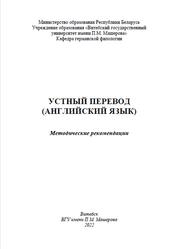 Устный перевод, Английский язык, Методические рекомендации, Бобрикова Е.П., 2022 — Методические рекомендации составлены в соответствии с программными требованиями, включают аутентичные материалы коммуникативно-аналитического характера. Данное учебное издание предназначено для студентов III … Книги по английскому языку
Устный перевод, Английский язык, Методические рекомендации, Бобрикова Е.П., 2022 — Методические рекомендации составлены в соответствии с программными требованиями, включают аутентичные материалы коммуникативно-аналитического характера. Данное учебное издание предназначено для студентов III … Книги по английскому языку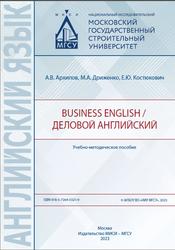 Business English, Деловой английский, Архипов А.В., Дриженко М.А., Костюкович Е.Ю., 2023 — В учебно-методическом пособии содержится теоретический материал по устной и письменной деловой коммуникации, а также упражнения для его отработки. Для обучающихся … Книги по английскому языку
Business English, Деловой английский, Архипов А.В., Дриженко М.А., Костюкович Е.Ю., 2023 — В учебно-методическом пособии содержится теоретический материал по устной и письменной деловой коммуникации, а также упражнения для его отработки. Для обучающихся … Книги по английскому языку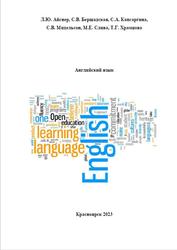 Английский язык, Айснер Л.Ю., Бершадская С.В., Капсаргина С.А., 2023 — Целью пособия является формирование речевых умений (фонетических, лексико-грамматических, чтения, аудирования, письма) и ознакомление со страноведческим материалом страны изучаемого языка (Великобритания) … Книги по английскому языку
Английский язык, Айснер Л.Ю., Бершадская С.В., Капсаргина С.А., 2023 — Целью пособия является формирование речевых умений (фонетических, лексико-грамматических, чтения, аудирования, письма) и ознакомление со страноведческим материалом страны изучаемого языка (Великобритания) … Книги по английскому языку


